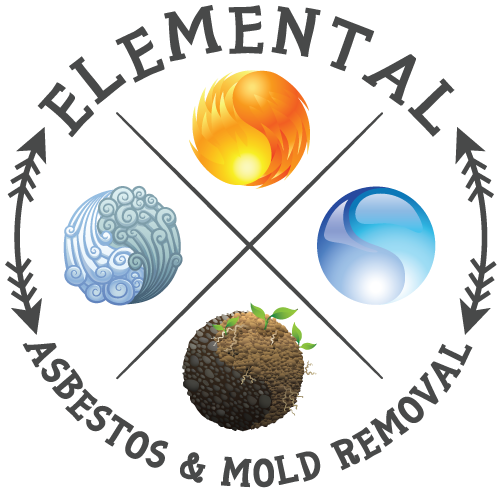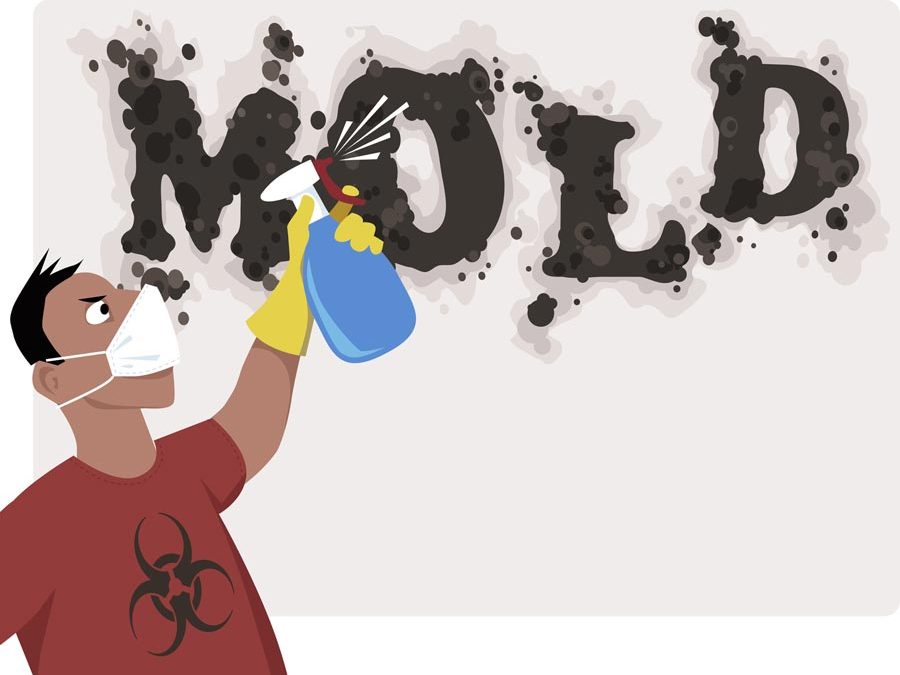Mold is a type of fungi that grows in moist, dark places. It is different than other fungi, such as mushrooms, in that it grows in small filaments called hyphae, rather than the larger capped form. Just like mushrooms, there are good (safe) types of mold and there are dangerous (poisonous) types as well. Air currents in a home will carry mold spores, which will grow and multiply when they land on a spot that is moist or has had moisture for more than 24 hours.
Mold will grow anywhere there is a consistent resource of water or moisture as well as an organic substance to feed off of. This may be the cabinet underneath a leaky pipe or the ceiling underneath an overflowed bathtub that was never replaced. Mold typically needs between one and 7 days to fully flourish. The food for mold includes wood, cardboard, some parts of drywall plus organic materials, such as soap, and dust.
Mold can cause an obvious smell. Within that smell, there are tiny “mycotoxins” which when breathed in can make you very sick. The common side effects of mold are having a headache, itchy and watery eyes, skin irritation and redness, sneezing and itchy skin. These are only the warning signs of mold infection. Once the issue progresses, you may experience constant headaches, loss of appetite, chronic bronchitis, weight loss and hair loss – among many other symptoms. Mold is not something to be taken lightly.
There are three different types of mold that are divided into hazard classes – hazard Class A, B and C. All of them have a different level of toxicity to humans.
Class A should be removed right away due to possible infection or toxin creation; Class B can cause infection or allergies over a length of time, and should also be removed right away. Class C has no known toxicity to humans, but may cause issues with building structure, etc., and should be removed as well.
The following are common types of mold found in the home:
Cladosporium – this type of mold can be green, brown, grey or black and is either a Class B or Class C, depending on the variation. It is most commonly found in walls, insulation, dust or wood, but appears in other places as well.
Aspergillus – this mold occurs in white, grey, brown, yellow, green or black and is classed either A or B. It can cause infection in those with weak immune systems and can generate toxins in some situations, while other varieties will cause only allergic reactions. It can grow in walls, paper products, insulation, soil or clothing.
Ulocladium – this mold is found on damp areas, such as walls, around windows or in dusty areas. It can either be black or grey and is in Class B or C.
Acremonium – found on insulation and sheetrock or drywall, this mold can either be white, grey or brown. Variations occur in all three hazard classes.
Stachybotrys – this is the infamous “black mold” that everyone talks about. It needs a very damp area to grow and is black in color. It is Class A as it can create toxins.
Alternaria – this Class B mold has been found to cause allergic reactions and can grown in dusty areas, around windows, damp areas, in soil and on plants. It is either black or grey.
All mold when disturbed goes through a process called dissemination, which is when the mold colony releases its spores into the air to survive and grow somewhere else, anytime you remove mold it should be done by a professional with the now how and proper equipment, remember 1 square inch of mold once disturbed can release 100000 mold spores!

